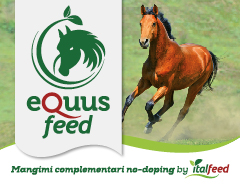|
|
|||||||||||||||||||
|
|
|
|||||||||||||||||||
|
 |
|
 |
|
|
|
|
|
The Good Morning Bloodstock postbag is positively bulging after I touched on some hot topics in recent weeks – not least the state of jumps breeding in Britain and Ireland, with seemingly even more French-breds than usual ruling the roost this season. “I was starting to think I was the only one who noticed,” wrote Ian Hannon. “Irish breeding is in the place it is at the moment because it’s ruled completely by the sales and not racecourse performance from foal to store. “A large volume of breeders no longer think about what sire might suit their mare for whatever reason, be it performance, size, scope, speed, ground preference or so on. It’s all down to what will make money at the sales, that is, what will be in fashion. “And the current fashion isn’t what you think it should be when five of the top ten leading living jumps sires at the moment were not in the top ten at the Tattersalls November National Hunt sale. “So now, when you stand at the stable door of your foal by a sire out of the spotlight, the auctioneer tells you that the buyers are only interested in five or six sires. We’re doomed before we start.” When sales-ring fashions don’t reflect actual stallion performance, but hype over unproven entities instead, and those auction results drive more breeders to use young sires who haven’t been tested, and might turn out to be below-average sources of talent, you can see how there could be a deleterious effect on the breed. Ian and several other readers believe French jumps-breeding has been protected from that cycle. “Many of the French-breds winning this season have Flat breeding somewhere in their first three dams, so they’re a different species; a more precocious animal,” he continues. “Do we need more speed in our sires? Are we just at the end of an overdependence on the outstanding Sadler’s Wells and Galileo bloodlines? Should books of mares be limited to a sire until he proves himself on the track? “The funny thing is, if you have a broodmare in Ireland to make money, you have to have an out and out National Hunt pedigree, but put (Fr) at the top of the page and you can sell stores for huge money with a mixed pedigree, Flat and jumps.” Richard Lancaster is best known as the long-serving director of Shadwell Stud, but he is also an authority on National Hunt racing and breeding, and he contacted Good Morning Bloodstock to point out that French-bred success is nothing new. “After reading your excellent article this morning I wondered why we should be so surprised at the success of the French-breds in so many of the British and Irish top National Hunt races. Were not two of the most influential jumps stallions 50 or so years ago Vulgan and Fortina, both of whom were French-bred? “Going back to my early days of following racing, I recall Ryan Price and Peter Cazalet sourcing a number of good French-breds, including Manicou, who was owned by Queen Elizabeth, the Queen Mother. I suppose interest more recently was sparked by the successes of Francois Doumen, who regularly sent over top-class horses to plunder some of our best races.
Richard also pointed out that Fortina was the only entire to win the Cheltenham Gold Cup, which brings us to another popular recent topic, the move away from leaving jumpers ungelded. “Many trainers who are not dual-purpose do not have the facilities for colts or entires; suitable turn-out is one detail, while the horses themselves may find a disadvantage having their accoutrements scraping through brush fences, as it may put them off jumping,” observed Sue Featherstone. “Although French horses appear unfazed by this, so it’s obviously not a big problem. “Regrettably few descend from the male bloodline of one of the foundation stallions of the thoroughbred, the Byerley Turk, who appeared to be a rangy type and was most likely an Akhal-Teke, a breed that has many attributes, such as speed, endurance and intelligence: the qualities required for a good racehorse. |
|
“Very few male bloodlines are left of the Byerley Turk. Most go jumping and therefore due to many being gelded, it has left a minuscule legacy of stallions.” Sue is disappointed that racing authorities haven’t intervened to somehow arrest the decline of the Byerley Turk’s male line, saying: “Inexplicably, blood lines and genes don’t get any attention from breeding associations. To allow a male foundation line to reduce to extinction is inexcusable. Perhaps the European Federation of Thoroughbred Breeders’ Associations might like to discuss this at their next congress in Newmarket? “I totally understand why artificial insemination cannot be used for thoroughbred breeding, but it means that while for other livestock there is a bank of genes that are regulated and protected, the thoroughbred does not have that luxury. “Hopefully, breeders will take heed and fathom why the French or European-bred horses are outperforming the British and Irish jumping contingent. It’s time to look closer at the potential advantages of some other nations’ practices; when it comes to producing successful jump horses.” Sue Somner got in touch to share her reminiscences of her favourite entire jumper, a half-brother to top chaser Spartan Missile who won six times over fences and three over hurdles. “The first entire horse I fell in love with was Cruise Missile – gosh he took my breath away,” she relates. “He was ridden by the poetic John Francome and they made a handsome pair, so when the horse went to stud I yearned for a youngster by him. “I eventually bought one of his very last, and he became my eventing soulmate, winning three international three-day events, and a championship at Gatcombe, plus the Olympic reserve for GB and in the Canadian team for Hong Kong. “I’ve long looked at the entire National Hunt sires and sent my advanced event mare to I‘m Supposin, and that horse went to the Rio de Janeiro Olympics for Holland, after I’d produced him and sold him on to them. I know what you’re thinking, these are all event horses; but didn’t they just breed such cream and class! “As you so rightly point out, there’s a sad lack now, and I’m sort of forced to look at smart Flat horses instead. I adore my racing and have been breeding from my lovely, very sound thoroughbred mares, trying to upgrade as I go.” Here’s where things get exciting, as all that talk about leaving jumpers entire, allowing them to have a second career at stud if they proved good enough, has encouraged a few readers to give it a go. Good Morning Bloodstock has, finally, started a movement. Gary Sanderson, who stands the Group 3-winning Speightstown stallion Wusool at Lilling Hall Farm in Yorkshire, is of the same mind, but could do with some support in his venture. “I have a Passing Glance unraced seven-year-old entire out of the Juddmonte mare Clipper Line,” he writes. “I’ve rung around some top trainers in the last two years and asked if they would like to train him but to no avail, with him being an entire standing 16.2½ hands. He’s broken cantering and a good ride. Anyone interested can give me a call.” Keep the letters coming in, by emailing the address below. Don’t be shy with your thoughts and feedback: even if I don’t publish them as regularly as I should, they help me shape future articles. |











